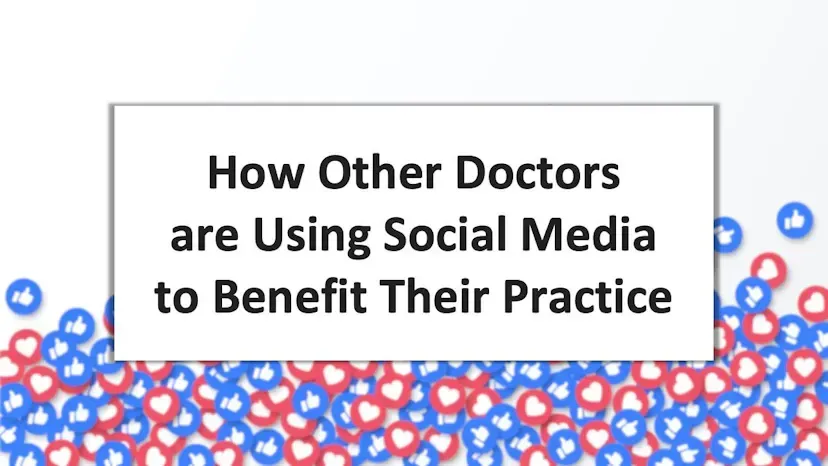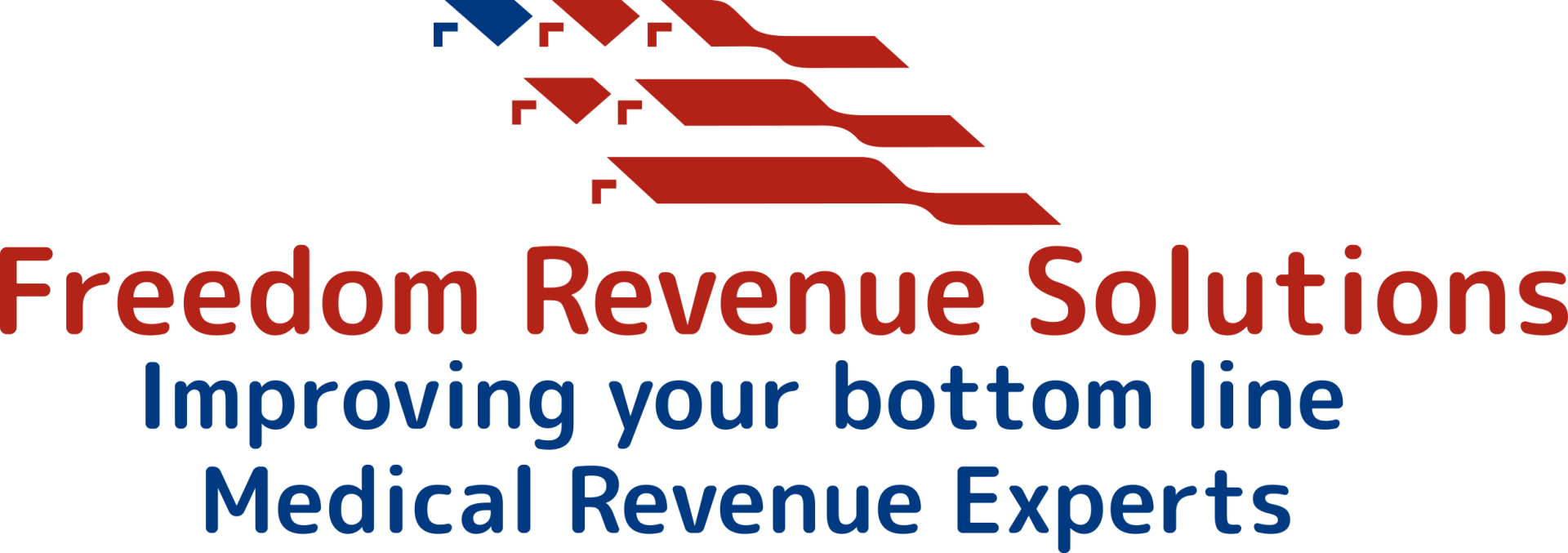
Physicians, particularly those who haven’t received business education, must address the frequently circulated question among their ranks: “Can you practice medicine without money?” Medical history unveils an era when most physicians were compensated through non-monetary means for their medical services and often went unpaid. During that time, the choice to pursue a medical career was grounded in the personal belief that treating patients was the foremost aspiration for most physicians. Few made this decision, and the majority anticipated fulfillment from it. Physicians resided within the lower middle class due to the unavailability of business education. At present, most physicians still reside in the middle class of society. However, the medical landscape in which they practice has undergone a complete transformation. These changes have led to a significant loss of physicians for various reasons. Surveys indicate that about 65 percent of privately practicing medical doctors contemplate leaving medical practice. They find their medical practices inadequately profitable to sustain or achieve their objectives, thus joining the “burnout club.” Private medical practices are collapsing because these physicians cannot generate the income required to sustain their practice or meet their obligations and goals. Currently, we find ourselves in a situation similar to that of physicians in the 1700s—struggling to earn a livable income and compelled to tap into their creative capabilities to survive financially. This predicament remains despite their unique professional education and status, with a lack of business knowledge to pull them out of the quagmire. Renowned author Nicholas Erik points out our failure to revert to the fundamental principles that have held true for centuries. These are the factors that remain relatively constant. Drawing from his AI experience, he believes in the potential to align our work and knowledge with the pace of technological advancement, building a sturdy career foundation. Recognizing the significance of fundamentals highlights how often we overlook and neglect them. Many of us tend to bypass them, hoping that new tactics or tricks will miraculously yield improved outcomes. This phenomenon has indeed seeped into the medical education system. I still find it astonishing that I spent four years in a top medical school in our nation, progressed through internships, residency training, and several years in private medical practice before realizing the necessity of a business education to achieve my goals. It’s astounding that I endured all of that without once comprehending the fundamental aspect of medical practice—managing a medical practice as a business. Moreover, and more crucially, I committed the same oversight as the majority of medical students and young physicians still do today. Even as a more seasoned practicing physician, struggling with the realization that I had neglected the “other” critical fundamentals essential for a successful medical practice. I had never worried about or considered making a profit until it became an issue. During the initial five years of private solo medical practice, as my income gradually increased, I never received any form of business education. The progress I made was more like a “placebo miracle” experienced by every physician in the early stages. “Hey, things are going great.” Certainly, another business-savvy physician in my specialty required someone to handle the overflow of patients, and I can’t express enough gratitude for that opportunity. The presence of a new physician in the area is also a draw. Medical patients often seek out a new medical doctor to determine if they align with their treatment criteria, leading to an influx of new patients beyond the natural flow. This phase is exhilarating for both patients and physicians. The issue arises when this excitement dwindles after five years. Income levels off, especially during certain holiday months. Patients depart from your practice, and the influx of new patients diminishes. However, you remain oblivious to this since you haven’t maintained records of new patients versus those leaving your practice each month. You believe you’re “doing great,” yet the attrition remains unnoticed. Why do we fail to perceive this? I certainly did. Most private practice physicians receive monthly financial statements or printouts from their CPAs or accountants. Unfortunately, these summaries often seem of minimal value because, if the income figure surpasses the expenses, “all is well.” Few pay heed to the subtle messages scattered across the pages that hint at potential problems. Most physicians lack comprehension of financial statements, myself included. Despite being a proficient medical doctor, this doesn’t translate to improved financial outcomes. Only when the office manager mentions that the practice’s income barely covers overhead expenses do you start to suspect something is amiss. Consequently, you review the last six to eight monthly financial statements from your CPA. A gradual decline in practice income becomes evident. You dismiss this as a temporary issue, believing that income will inevitably rebound. When this dwindling income persists for half a year, a significant concern arises, demanding action. What no one informs you about, and what you’ve never questioned, is the deficiency in your office management. Unfortunately, your CPA, attorney, or office manager never raises a red flag. This predicament is yours to address, not theirs. Once your practice’s income has decreased for six consecutive months, the likelihood of its total failure reaches 100 percent, unless you possess marketing knowledge to resolve the issue. Do you possess such knowledge? Unfortunately, most physicians don’t and have never grasped its significance. It’s one of the fundamental aspects of a prosperous business. Yet, even then, you might not have the resources to hire a business expert capable of resolving your practice’s business and financial challenges. During my tenure in private medical practice from 1973 to 1994, I’m ashamed to admit that my lack of business acumen ultimately led to the demise of my medical practice. Only after retiring did I commit to understanding why my private medical practice career concluded in such a disappointing manner. My self-assessment of “I believe I performed well in my private medical practice” despite my business ignorance came to an abrupt halt upon retirement. Several attempts at online businesses failed, yet I did establish that anyone aspiring to substantial business success must possess foundational business education, either before or early in their business venture. The cornerstones of business success lie in business management and business marketing. After dedicating fifteen years of retirement to studying and absorbing business principles, I finally found the answers I sought. I comprehended why, over the past century, countless physicians lost their private practices due to financial reasons. The absence of business knowledge and the utilization of business tools were the culprits. The ultimate consequence of inadequate business education for physicians is a predetermined likelihood of failure to some extent in their medical practices. This is a truth medical schools inexplicably omit. Consequently, thousands of medical doctors have either forfeited their private practices over the course of a century or have struggled to subsist on an income comparable to that of blue-collar workers, rather than reflecting their value as elite professionals. The current surge in physician attrition is evident. Men are deterred from pursuing medical careers. Documentation reveals stagnant physician incomes coupled with government-imposed fee limitations and financially unfeasible practice mandates. Medical schools must integrate business education into their curricula to ensure the viability of our profession. Failing to do so will likely result in the assimilation of our profession into a socialized health care system. This compromise would undoubtedly erode physician quality and trigger the deterioration of health care nationwide. I’m resolved to champion the inclusion of business education in all medical schools until my last breath. What about you? Curtis G. Graham is a physician.h

Researchers from Oregon Health & Science University found that a high number of older Americans lack health insurance. The study found that about 25% of low-income patients receiving care at community health centers remain uninsured when they turn 65, even though most would become eligible for Medicare coverage. The results were published in the Journal of the American Board of Family Medicine. Researchers note that its more difficult to manage health conditions without insurance, and that older uninsured patients may face costly hospital stays and avoidable illnesses that require expensive health care services. The researchers examined electronic health record data for more than 45,000 patients who became eligible for Medicare between 2014 and 2019. The data was from patients seeking care at community health centers, which provide care regardless of ability to pay. The results showed that it was more common for Hispanic Americans to lose insurance coverage at 65. Medicare requires participants to be U.S. citizens or permanent legal residents, meaning undocumented immigrants cannot access the government-provided program. Also, patients with low incomes may not be able to afford the Medicare premiums. Researchers found that patients tend to be diagnosed with new chronic conditions as they become eligible for Medicare. For example, about 86% of the study’s patients had two or more chronic conditions after they turned 65, compared to 77% beforehand. Those who were uninsured prior to enrolling in Medicare were diagnosed with more new chronic conditions than patients who had insurance prior to enrolling. Researchers noted this was most likely because the patients were not aware of the conditions because of a lack of health care access.

Physicians are struggling with challenges navigating the health care system while trying to provide the best possible care for their patients. Sometimes, struggles at work are compounded by struggles at home as we all face stressors during our travel through life; doctors are no exception. Many physicians who went through a period of burnout have sought and are seeking help. They are feeling hope for the future. I asked three physicians how burnout manifested in them, how they are doing now, what brings them joy, and a best tip to share with their colleagues. Here’s what they had to say: Diana Londoño, MD Before coaching, when I was in full-blown burnout (x 2), I was a ball of negativity and cynicism. I was definitely not a joy to be around. My body also suffered from chronic unmanaged stress, including symptoms leading to teeth grinding, which destroyed my molars, leading to root canal and abscess, new onset GERD, asthma at 42 years old, debilitating chest pain with “normal” echo, and Holter monitor, and joint pain with elevation in rheumatoid factor seen in autoimmune disease. Once I began coaching and had a spiritual awakening, I began a daily spiritual practice, and all symptoms resolved. It is daily work, but I am more calm, joyful, less reactive, and more compassionate and curious than before. I have a bigger space from reaction to action, and I take things that bothered me before now more lightly. I also started writing to process my emotions and reading daily to keep my mind and creativity active. I have a daily routine to quiet my mind as well as continue to learn as much as I can to share with others. My burnout/ spiritual crisis was the impetus to create Physiciancoachsupport to help colleagues in a free and confidential manner and realize we are never alone and there is always hope! Every day, I wake up and realize all the blessings we have that bring me joy, including giggles and laughs from my kids. Knowing I have stopped many cycles of generational trauma also brings me joy. Best tip: Be yourself. See what brings Dr. Londoño joy . Jillian Rigert, DMD, MD We often wait until we need a change to give ourselves permission to pause, ask for help, and possibly pivot. I know … I am guilty of it. It took a few close calls with a slow death from starvation for me to realize- no one was going to be able to save me but me — and I needed to pivot. Letting go of the guilt and shame after the career pivot that saved my life took five years, and it started with an article on KevinMD (thank you, Dr. Pho!). Some people say I was brave, but quite frankly, I didn’t know if I could keep going- and I knew I couldn’t leave this Earth without speaking the words that may save others. Sharing my story has brought a community of friends into my life who taught me what it really means to be seen and supported holistically. Through our shared humanity, struggles, and triumphs, we find community and belonging. Connection, a sense of belonging, and a mission-driven life have brought peace, love, and optimism back into my life. Coaching taught me how to get back into the driver’s seat and discover, or rediscover, what it truly means to live a life true to myself. Helping others to do the same has expanded my world and filled my heart with a sense of purpose, meaning, and fulfillment. “What do you really want for your life?” – a question I’ll leave you with. And one we often don’t stop long enough to consider. Learn more: Jillian Rigert, DMD, MD – A Life True to You Best tip: Create a life in alignment with your core values and grounded in your why- break free from societal pressures that often lead you astray.

Resilience and accountability go hand in hand. In order to bounce back from adversity, we need to be willing to take responsibility for our actions. We need to acknowledge the mistakes we’ve made and the damage we’ve caused. But we also need to have the strength to keep going, even when things seem impossible. We need to be able to pick ourselves up and move forward—no matter what. Of course, this is easier said than done. It can be incredibly difficult to take accountability for our actions, especially when those actions have caused harm to others. It can also be challenging to stay resilient in the face of adversity, especially when the odds are stacked against us. But as this week’s podcast guest shows, it is possible. Molly Bloom, the real-life titular character of the Oscar-nominated film Molly’s Game, shares her unconventional journey through the highest of highs and lowest of lows in her life. Her story began with the dream of becoming an Olympic skier. When a devastating injury put an end to that dream, Molly was forced to find a new path in life. But as her success grew, so did the risks. Molly soon found herself mixed up in a world of drugs, violence, and corruption. And when the FBI finally caught her, she was forced to confront the consequences of her actions. Throughout it all, Molly Bloom demonstrated a remarkable level of resilience. Despite the many obstacles she faced, she never gave up. And even when things seemed impossible, she found a way to keep going. That’s evident in the way she handled her arrest, her trial, and her time in prison. Despite the many challenges, she never lost hope or succumbed to despair. At the same time, she also took full accountability for her actions. She acknowledged the mistakes she made and the harm she caused to others. She didn’t make excuses or try to shift the blame onto anyone else. Instead, she assumed responsibility and worked to make amends.

Since the pandemic, the shortage of behavioral health professionals has become more dire as the need for more comprehensive mental health care has increased. As of March 2023, 160 million Americans lived in areas with mental health professional shortages . 55% of counties in the U.S. have no psychiatrists, and 77% report a severe shortage. In some states, such as Maine, there was a 50% drop in the number of psychiatrists from 2015 to 2020, leading to wait times of up to 18 months to access psychiatric care. Moreover, 70% of psychiatrists are 50 years old or older. By 2025, demand for psychiatrists will outstrip supply by 25%. The toll that psychiatric illness takes is substantial. Depression is the leading cause of disability in the world. Medical costs for treating patients with chronic medical disorders and co-occurring psychiatric disorders such as depression are two to four times higher than in those without psychiatric disorders. Nearly half the population in the U.S. report recent symptoms of anxiety and depression. The annual number of deaths by suicide is 48,000, and overdose deaths exceed 100,000. Among the 20% of the U.S. population that are the highest utilizers of medical care – accounting for 80% of all health care costs – 60% to 80% have an underlying psychiatric disorder that drives increased utilization. Despite the high prevalence of psychiatric illness and costs associated with untreated psychiatric illness, 60% of those with a psychiatric disorder and 90% of those with substance use do not receive any psychiatric treatment. It’s not only the stigma of receiving treatment or a lack of resources available but an unreliable intake system to identify and support those who need the most help. We live in an era where physical health providers are overwhelmed with requests from patients, lacking many of the tools and training needed to address the surge. And simply collecting written questionnaires on a patient’s mental health is not enough. Integrated behavioral health care models, where behavioral and physical health providers work together to treat patients, can address this growing issue. But with limited resources and high demand, delivering effective, integrated behavioral health care at such a large scale is challenging. In response to this growing need, measurement-based, population-focused models of care combined with the thoughtful utilization of digital solutions has emerged as an effective approach that can help deliver integrated care at scale despite limited resources. What is measurement-based, population-focused care? Measurement-based and population-focused care, a critical part of integrated care models like collaborative care , is an evidence-based health care approach where treatment decisions are guided by systematic measurement of patient-reported symptoms, functioning, and overall well-being. Typically, measurement-based care (MBC) includes standardized questionnaires (to assess symptom severity, progress, etc.), data collection, and provider analysis of the data to make informed treatment decisions and continuously adjust a treatment plan based on the patient’s evolving needs. This health care approach allows providers to offer more effective and personalized care based on objective information collection and assessment. MBC, traditionally used to collect and assess physical health metrics (blood sugar, weight, etc.), is essential for treating patients holistically — taking into account both their physical and behavioral health. For patients needing behavioral health support, MBC can help objectively track and assess a patient’s symptoms, which can often be subjective and highly variable over long periods. With MBC, health care providers can monitor a patient’s mental health status — whether it’s stable, improving, or declining — and address it accordingly. Aside from the efficiency that MBC can provide, this type of clinical approach can also help bridge other, more interpersonal gaps in the health care system. If executed well, ongoing patient monitoring can inform highly personalized treatment plans and improve patient and provider communication, allowing patients a structured channel for sharing their experiences with mental health without stigma or shame. Likewise, MBC can be used to help bolster patient engagement. The self-reported methods of MBC can encourage patients to take a more active role in their treatment plan and diagnosis, which can be empowering. Integrated care models are focused on treating large populations while relying on fewer resources. Psychiatrists that participate in these integrated care models will not consult with patients directly. Instead, they provide oversight of large caseloads of patients managed by behavioral health clinicians working in the practices alongside the non-psychiatric attending physicians (e.g., primary care physicians). MBC and population-focused integrated care models can bring an actionable, data-driven approach to supporting behavioral health while substantially increasing access to behavioral care holistically interwoven with patients’ overarching medical needs. However, it’s incredibly challenging to execute this strategy successfully without the right technology. How can technology advance measurement-based care? One of the biggest hurdles to using measurement-based care is having the right technology to deploy and scale it. Without technology, health care providers can struggle with administering routine assessments, or receiving unbiased patient information (due to the lessened but still present stigma around mental health) among other administrative burdens. With technology, health care providers can work more efficiently and more cost-effectively by sending remote questionnaires – clinical assessments like PHQ-9 and GAD-7 – via desktop or mobile, so providers and patients aren’t limited to in-person assessments, which can take up valuable appointment time. Providers can set up custom notifications that alert health care providers, directly in the EHR, when a patient’s data indicates a significant change or deterioration to help ensure timely intervention if necessary. Technology helps health providers make the most out of MBC — helping to risk-stratify populations, deliver timely interventions, and even allow health care providers to be proactive in their care, saving costs and preventing behavioral health crises. Measurement-based care — with the help of technology — embodies a commitment to evidence-based, patient-centered care, and it holds the potential to revolutionize how we understand, manage, and treat behavioral health conditions. The deployment of MBC using robust, secure technology has the power to create a brighter, healthier future for everyone. Tom Zaubler is a psychiatrist and physician executive.

Myth #1: Innovation depends on technology. Reality check: Innovation doesn’t have to be technical at all. It’s about reinventing as much as it is about inventing. Start by empowering your teams to address process or service challenges they deal with every day. Clinicians are hungry to remove barriers to quality care. They need to be empowered to think outside the box and act. Consider how a simple process redesign can greatly impact efficiency, cost, and patient and clinician experience. For example, reducing the average ED boarding time by just one hour can add up to millions in additional revenue each year. Also, imagine how education might transform an existing service. Vituity’s award-winning Emergency Psychiatric Intervention (EPI) initiative is a great example. Behavioral health patients often wait many hours in the emergency room because clinicians aren’t sure how to assess and treat them. Vituity physicians created EPI to close this gap through education and care standardization. Myth #2: We don’t have the resources. Truth bomb: Is innovation costly? Sometimes. But given the level of disruption moving through our industry, health systems can’t afford not to invest in innovation. The good news is that meaningful innovation doesn’t have to start with big, expensive projects. Instead, offer whatever support you can to small, well-defined initiatives. As each small win demonstrates a return on investment, you can justify a bigger innovation spend. Care transformation can also start from within your own teams. One of our practice sites is currently trialing an abdominal palpation device invented by one of our front-line physicians. This technology could inform the need for abdominal imaging without an in-person examination. It’s important not to underestimate the innovation potential coming from the front lines. Carve out protected hours for individuals to innovate, and you’ll be surprised what they can accomplish with little else. Myth #3: We don’t know where to start. Straight talk: Start thinking of innovation as “everything can be done better,” and you’ll easily spot opportunities for business, operational, and clinical improvement across your organization. One key to successful innovation is to start with a well-defined problem. For example, let’s say you want to improve inpatient length of stay. You might work with your clinical teams to map your current processes and set realistic goals for change. Another winning strategy is starting small with an agile, iterative approach. Test and validate solutions in real-world settings, gather feedback, and make necessary adjustments along the way. Many of Vituity’s signature solutions (including EPI and virtual navigation) were developed in a single health system before they were adopted across the organization. Finally, when choosing projects to invest in, consider their long-term scalability. Solutions that can be used by multiple departments, hospitals, or systems will reach more patients and have a more meaningful impact. A standout example is Vituity’s Rapid Medical Evaluation (RME)® solution, which was created by a single emergency physician in the early 2000s. RME has since been adopted by almost all Vituity EDs—and is used in some form by almost every ED in the country. Bringing Change to Life In our highly disruptive healthcare environment, innovation is a survival imperative. However, it’s hard to get executive leadership buy-in for innovative projects when it’s believed they’ll be highly technical, expensive, or time-consuming.

A survey from symplr , a health care software company, shows that chief information officers recognize the burden that inefficient technology systems place on physicians and other care providers. The survey, conducted among members of the College of Healthcare Information Management Executives (CHIME), encompassed CIOs, IT leaders, and clinicians from top U.S. health systems. The findings are detailed in the 2023 symplr Compass Report, "From Imminent to Urgent: Aligning Clinicians & IT is Critical to Streamlining Healthcare Operations." The data illustrates the formidable challenges facing health care leaders, with 80% of respondents highlighting the complexities arising from working with disparate IT systems , and 84% concur that bringing together health care operations software on a single platform could enable clinicians to redirect substantial time back to patient care, potentially reducing burnout and enhancing the management of technology. "The 2023 symplr Compass Survey data indicates a huge opportunity to consolidate health care operations solutions and give clinicians time back for patient care , which could greatly reduce burnout and make technology easier to manage," said B.J. Schaknowski, chief executive officer, symplr, in a statement. Key survey findings also include the shift in concerns, as clinician burnout and workforce challenges (41%) surpassed financial pressures (39%) as the foremost threats anticipated by organizations in 2024. Furthermore, 55% of health care organizations currently rely on more than 50 individual point solutions to drive their health care operations. Clinicians expressed distinct priorities compared to their IT and CIO counterparts. Concerns such as nurse retention, the overall well-being of nurses, technology optimization, and workflow streamlining were identified as more pressing issues by clinicians. Additionally, the survey highlighted a disparity in user experience perceptions, with 67% of clinicians and 48% of IT/CIOs concurring that their organizations provide a challenging user experience for individuals working across health care operations software, particularly in administrative and non-clinical tasks essential to hospital and health system management. Schaknowski emphasized the need for alignment, stating, "To do so, health systems must align the right stakeholders and partners to remove barriers between IT and clinicians to stop attrition of health care talent." The survey findings echo industry trends. McKinsey & Company, for instance, has identified potential time savings of 10-20% for nurses through digital automation to address workforce gaps. The 2023 KLAS Healthcare Operations Report revealed that over 90% of health care workers prioritize technology consolidation for operational efficiency, while Bain & Co.'s 2023 Healthcare Provider IT Report highlighted continued investments in Health Information Technology (HIT), with 75% of respondents anticipating increased software and technology investments in the coming year.

Telehealth flexibilities for prescribing controlled substances will continue through 2024. On Oct. 6, the U.S. Department of Health and Human Services (HHS) and the U.S. Drug Enforcement Administration (DEA) in the U.S. Department of Justice announced the continuation of a rule that started during the COVID-19 pandemic . Starting in March 2020, physicians were permitted to prescribe some controlled substances via telehealth without seeing patients in person. That allowance was to end with the COVID-19 public health emergency (PHE) in May, but the federal regulators continued it until Nov. 11, six months after the end of the PHE. The Oct. 6 announcement extends the exception again through Dec. 31, 2024. “In order to prevent lapses in care, these exceptions allowed for the prescribing of controlled medications via telemedicine encounters even when the prescribing practitioner had not conducted an in-person medical evaluation of the patient,” said the notice from HHS and DEA. The provision actually consists of two exceptions, one dealing with controlled substances and on covering buprenorphine. The federal regulators had a public comment period that prompted 38,369 comments before it ended in March this year. DEA hosted public listening sessions, scheduled for last month, and the announcement said leaders would carefully evaluate all the public comments before promulgating new standards or safeguards by fall 2024. DEA listed a number of formal reasons for the most current extension. They include addressing “the urgent public health need for continued access to the initiation of buprenorphine as medication for opioid use disorder in the context of the continuing opioid public health crisis,” the announcement said. If the existing telemedicine flexibilities ended on Nov. 11, there is a chance “it could lead to potential patient harm – due to an inability to access appropriate care – in some instances,” the announcement said. The American Telemedicine Association (ATA) and its ATA Action committee praised the DEA and HHS for the action. “We are thrilled that the DEA is taking such a thoughtful and thorough approach to creating the right rules around the prescription of controlled substances. This is a critical issue for millions of individuals and their families, as well as clinicians wanting to provide care to their patients, wherever and whenever they need it,” ATA Senior Vice President Kyle Zebley said in a statement . He also is executive director of ATA Action. “We have served as the guardians we promised to be for patients benefitting from these services and will continue to work on their behalf to ensure that the final rules do not restrict access to needed telehealth and virtual care services and do not create undue burdens for providers, while preventing diversion,” Zebley said. Next year could be a “Super Bowl for telehealth,” with other flexibilities first granted to deal with COVID-19, also set to expire. Examples include tax provisions for high deductible health plans and health savings accounts, and in-person or telehealth rules for Medicare, hospice care and the Acute Hospital Care at Home Program, the ATA statement said. “This is a historic opportunity to make crucial changes to our healthcare system that will appropriately expand access to urgently needed care to some of our most challenged and underserved patient populations,” Zebley said. “This is not rhetoric, it’s real opportunity that we must not squander.”

In the early days of social media, many doctors did not see a use for it at their medical practice. Now, with social media becoming the dominant way that many people – including their patients – prefer to communicate, doctors have found ways to leverage it to benefit their practices. Research from Software Advice revealed many insights into how doctors are using social media. Here are the key findings.

You work hard to help your patients stay healthy. What factors are making them happy – or not? Primary care physicians are looking for ways to assist patients dealing with difficulties in drivers of health , also called social drivers or social determinants of health. Those issues include food security, housing stability, transportation, utilities, and interpersonal safety. There are other stressors that physicians may never be able to cure. For example, in the national economy, high inflation remains a threat to patients’ mental health, said the study, “2023’s Happiest States in America.” More than 75% of Americans who have experienced price increases where they live reported feeling “very” or “moderately” stressed by those. The findings were published by online personal finance company WalletHub. “Happiness comes from a combination of internal and external factors,” WalletHub financial writer Adam McCann said in the report. “We can influence it somewhat by approaching situations positively or choosing to spend time with people we love, doing activities we enjoy. It’s harder to be happy in some years than in others, though.” WalletHub examined 30 metrics around the 50 states to determine the happiest states, and states where joy may be more limited. Data come from a variety of government, academic and private business sources, including the U.S. Census Bureau, Bureau of Labor Statistics, and Centers for Disease Control and Prevention.





